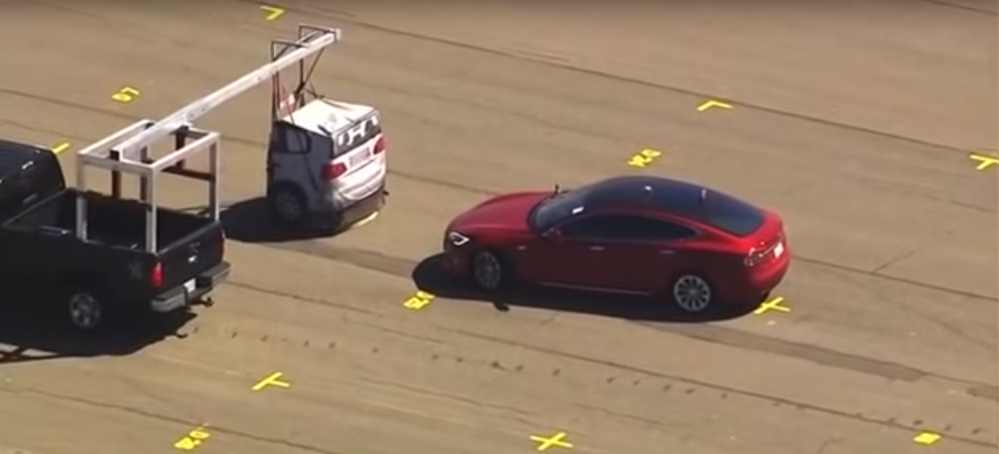
Tesla is seeing an increase in complaints over serious and dangerous phantom braking events plaguing Autopilot in the latest software updates.
Phantom braking is a term used to describe when an advanced driver assist system (ADAS) or a self-driving system applies the brakes for no good reason.
The system can be falsely detecting an object on the road or anticipating a collision that won’t actually happen and apply the brake to try to avoid it.
Obviously, phantom braking is something you want to avoid since it can create accidents if someone is following too closely behind you.
For Tesla owners, it’s always been part of Autopilot, but it has been manageable for the most part. Events would be few and far between.
But things have been seemingly getting worse lately for many Tesla owners.
Last month, Tesla briefly pulled a new version of its Full Self-Driving (FSD) Beta software after many testers reported constant phantom braking issues – a problem that CEO Elon Musk himself acknowledged.

FSD Beta is only being tested by a limited number of Tesla owners, but now it’s clear that the phantom braking is also becoming a significant problem for Autopilot users.
Over the last few weeks, Electrek received many reports from Tesla owners claiming to have experienced an unsual number of phantom braking events.
Following up on the issue, we found that the National Highway Traffic Safety Administration (NHTSA) has seen a significant increase of complaints from Tesla owners regarding the same phantom braking issue over the last month.
One of the recent NHTSA complaints reads:
“Upon accepting delivery at the end of May we have accumulated 9,000 miles on the car and have a had horrible experiences with the traffic aware cruise control slamming on the brakes for no apparent reason with nothing ahead or passing cars. Behavior can be 5-10 mph slowdowns or in some cases FULL brake pressure which puts us in danger of being rear ended. Multiple times we have been close to rear-ended.”
The complaints are all very similar to this one with drivers saying that their vehicles are having a significant number of phantom braking events on Autopilot.
Some of the owners said that they reached out to Tesla regarding the issue, but they were told that it is due to “software evolving”:
“While driving using cruise control the vehicle will occasionally brake suddenly for unknown reasons. In one instance I was worried that the car following me would either hit my car or be forced to take other action possibly causing an accident. When I contacted Tesla regarding my concern they said something about the software program evolving…no fix available.”
The uptick in complaints appears to start around the time that Tesla transitioned to its vision-based Autopilot and dropped the use of the radar.
That started in May 2021, but there’s also an even more significant increase in complaints over the last few weeks.
Electrek‘s take
I have also been experiencing this phantom braking problem personally on my Model 3 recently.
I am an avid Tesla Autopilot user and phantom braking has always been something to watch out for. It would happen every now and again, but not frequently.
To me, it was just one more reason to be careful and always be paying attention when using the system.
But following the 2021.40 software update that I received on my Tesla Model 3 last week, I am seeing a significant increase in phantom braking events. I’m getting several of them per drive. As many as one every 10 km on Autopilot.
It’s very similar to what is described by the other owners above.
Sometimes it’s a strange deceleration for no reason and other times the car applies the brakes abruptly for no good reason.
An interesting example that I noted last week was when I auto lane changed to the left lane on the highway because I saw a car coming up on the ramp that was going to merge around the time I was passing the ramp.
I was driving on Autopilot and let it move to the left lane to let the car merge, which it did without issue, but as I was passing it, Autopilot decided to slam on the brake as if the car was both merging and changing lanes to the left, which it wasn’t.
Luckily, there was no car behind me and I was able to fight back against the braking event quickly, but it was scary.
I talked with other Tesla owners on the latest updates, and it seems that some are having the same issues while others aren’t.
There’s undeniably a significant uptick in phantom braking events, but it doesn’t seem to be affecting all cars the same way.
Subscribe to Electrek on YouTube for exclusive videos and subscribe to the podcast.
Author: Fred Lambert
Source: Electrek



